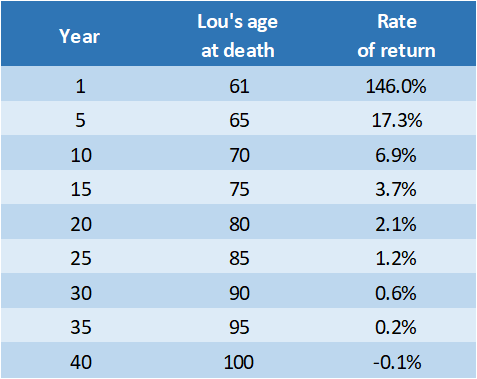Most people don’t need permanent life insurance. Best described as an unholy alliance between regular term life insurance and a high priced savings/investment account, permanent life insurance doesn’t offer the best solution for most people.

Unfortunately, insurance sales pros have a strong incentive to sell permanent life insurance due to high commission levels. And many people are convinced to buy permanent life insurance without fully understanding the ramifications of what they are buying. After all, permanent life insurance is complex. And as Rick Ferri says about the financial industry, “Complexity equals job security.” If you can’t understand how a financial product works, it’s usually best to skip it.
But what happens if you find yourself in a situation where you already own a permanent life policy? Should you cancel it or keep it? Here are some things to consider:
#1 – Do you still need the life insurance?
If you still need life insurance and there is ANY doubt about your ability to replace your existing coverage with a comparable term life policy, then keeping the permanent policy can make sense. For example, if you are older or have disqualifying health issues that would effect underwriting, then you could run into challenges when buying a new term life policy.
Check with an independent insurance agent to see if your circumstances will withstand the underwriting process. But whatever you do, if you need life insurance, then remember that “a bird in the hand is worth two in the bush.” Don’t cancel an existing life insurance policy until you have a new replacement policy in force.
#2 – What’s the guaranteed rate?
Most insurance companies offer a guaranteed investment option. If you bought your policy a long-time ago, it’s possible that your guaranteed rate is above prevailing interest rates. So in that case, it can make sense to hold onto an old permanent life insurance policy sort of as a quasi fixed income investment.
For example, if bond yields are 2%, but your insurance policy offers a guaranteed yield of 3%, then you may consider keeping the insurance policy.
#3 – What’s the rate of return?
Another way to analyze your permanent life insurance policy is to estimate the implicit rate of return for the insurance policy over various time frames.
Let’s say your friend Lou is 60 years old and owns a permanent life policy with a cash value of $100,000 and a death benefit of $250,000. If Lou died today, the implied rate of return would be (250000 ÷ 100000) – 1 or 150%. Lou surrenders the cash value to the insurance company, and Lou’s heirs receive the death benefit. Not too bad (at least if you’re not Lou).
But what if Lou lives a long time? Well, now Lou needs a good estimate of how much it will cost to keep the policy in force. Start by asking the insurance company to run an updated “illustration” or financial projection of the insurance policy. The insurance company can look at where the policy is today, calculate the future cost of insurance, and estimate the returns on the investments inside the policy.
Let’s assume that, after checking with his insurance company, Lou is confident he can keep the policy in force for the rest of his life by making additional cash payments of $4,000 per year.
Using a spreadsheet and standard time value of money formulas, we can compute the expected rate of return:

As you can see, living longer will reduce the expected return. Armed with this data, Lou will need to make a judgement call about whether maintaining the policy makes sense for his situation. If Lou knew when he was going to die, then this would be an easy decision. But alas, the future is not clear.
#4 – What about taxes?
Taxes can also play an important role. Death benefits from life insurance are not taxable as income, but they can be included in your estate for estate tax purposes. If you choose to cancel a permanent life insurance policy, then you may owe taxes on any investment earnings attributable to the policy. And you’ll also accrue taxes on dividends and capital gains if you invest the assets in a regular brokerage account.
#5 – Life settlements
It’s also possible to sell your life insurance policy in exchange for a lump sum. However, this process is cumbersome and opaque. There are only a few companies that participate in this space, and the potential for getting ripped off by a broker or other intermediary is high. Generally, the best candidates for these transactions are those in poor health (i.e. short life expectancy) and those with a low cash value to death benefit ratio. It might not hurt to take a closer look at this option, but many will be disappointed. Taxes can also take a bite out of any proceeds from a sale.
Conclusion
The main takeaway here is don’t make a decision on an old permanent life insurance before running the numbers and thinking things through. Sometimes a policy with high fees could be worth keeping under the right circumstances. But if maintaining an old permanent life insurance policy doesn’t make sense, then don’t hesitate to cut it loose.
Often the better course of action is to avoid all types of permanent life insurance (and any other complex financial products) in the first place. Most people will be just fine with term life insurance and investing the premium savings (based on what you would have paid for permanent life insurance). So if you know any young people in your life looking for life insurance, feel free to send them this article.
Remember to always shop around when getting insurance quotes. If you need life insurance (either term or permanent), check with an independent insurance expert who can get quotes from multiple companies.

